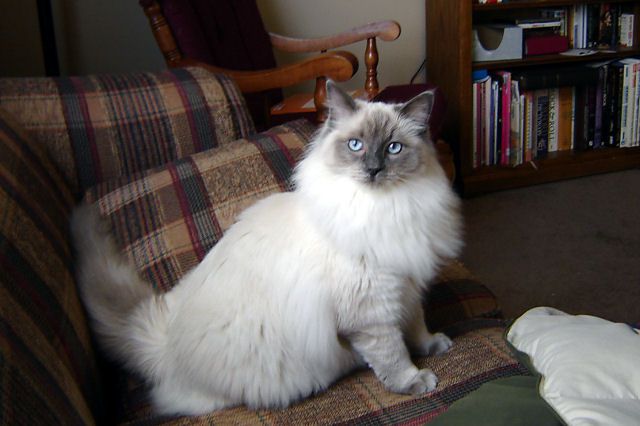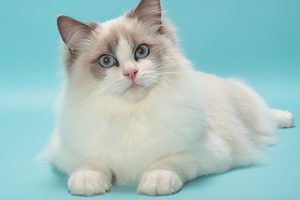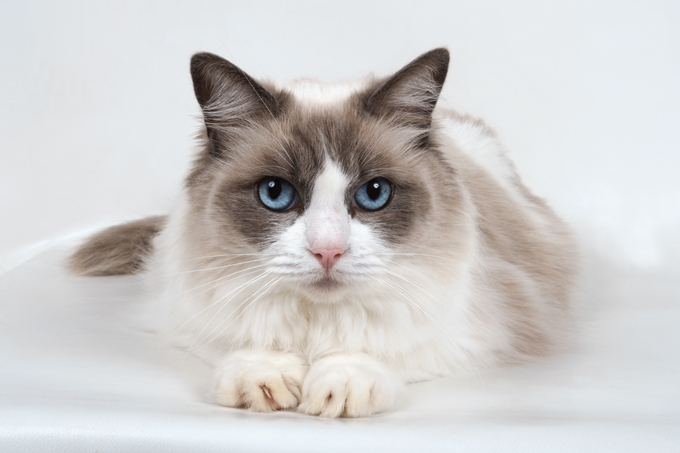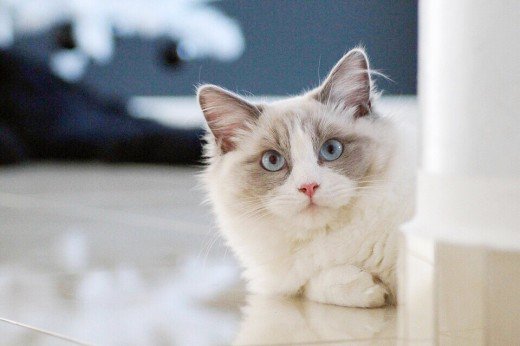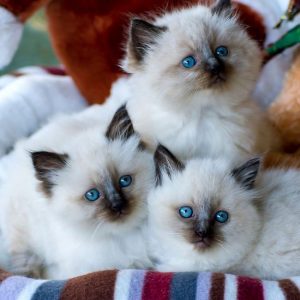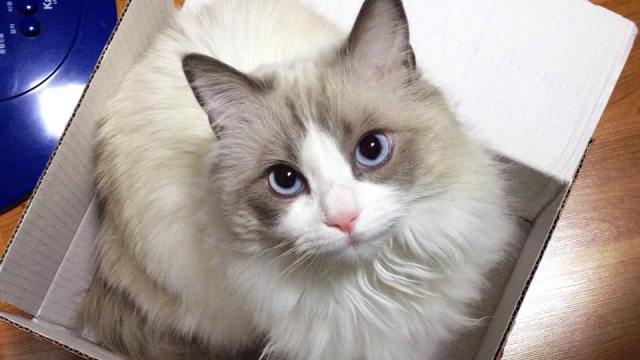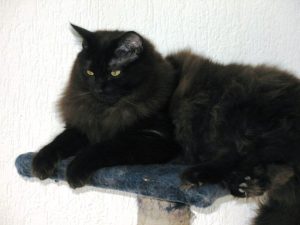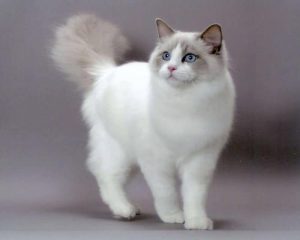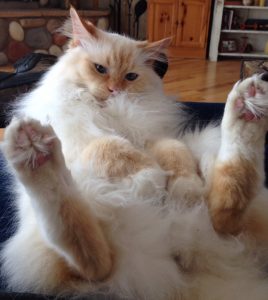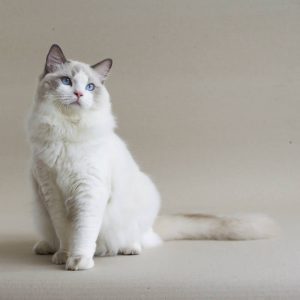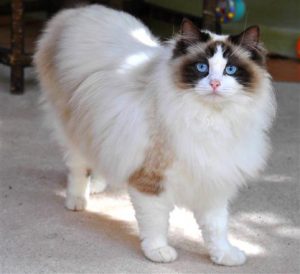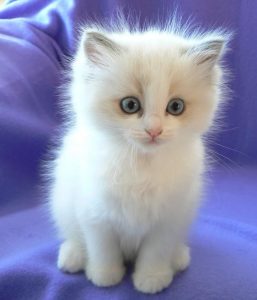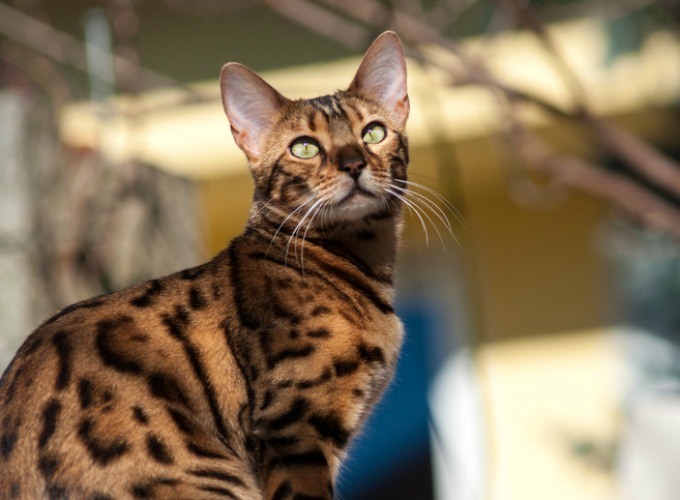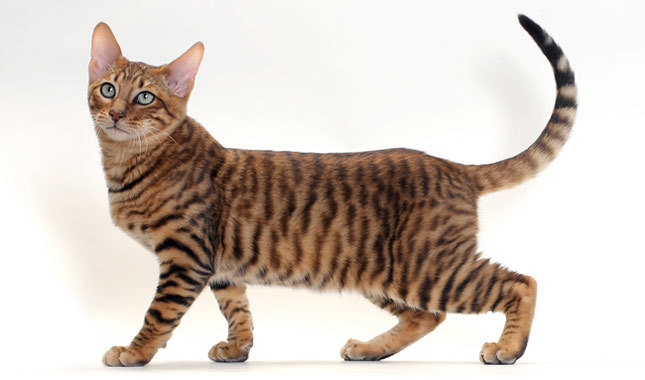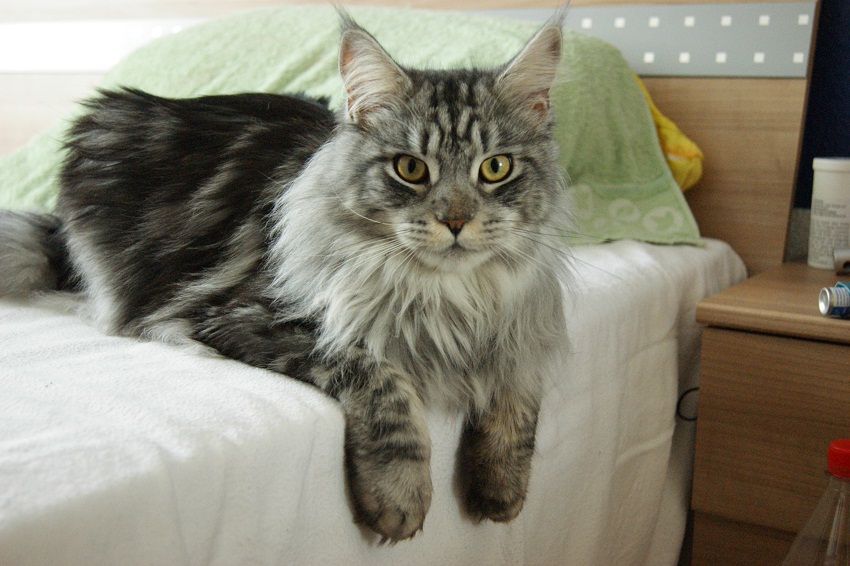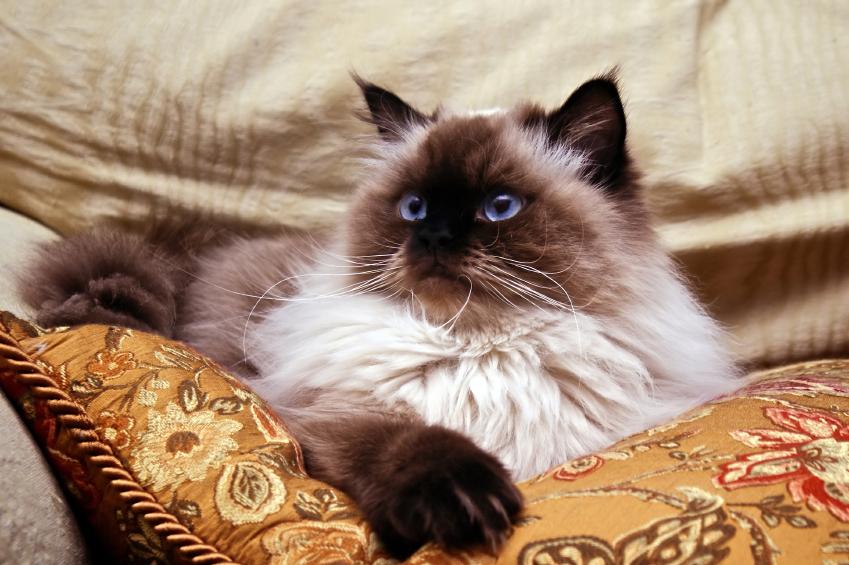What is a Ragdoll Cat
Ragdoll cat is a semi-longhaired, blue-eyed breed, with a sturdy built and balance body stature. Being soft to touch alongside its affectionate nature, the Ragdoll would be a perfect house cat to fill in the empty nest of those seeking a loving companion.
Quick Information
Physical Appearance & Size
| Body Type: | Large |
| Physical Appearance: | Heavy built; large wedge-shaped head; oval-shaped eyes; medium-sized, round-tipped ears tilted in front; strong neck; heavy-boned legs; large, round, tufted paws; long, plumed tail |
| How Much Does it Weigh | Approximately 10-15 pounds ( some males might way about 20 pounds) |
Colors & Patterns
| Coat Type: | Plush, soft, silky just as a rabbit |
| Color: | Seal, chocolate, lilac, blue, fawn, cinnamon, cream, red |
| Eye Color: | Sparkling blue |
| Pattern: | Bicolor, Mitted, Colorpoint, Tortoiseshell, Lynx, van |
Other Characteristics
| Lifespan/ Life Expectancy: | 12-17 years |
| Litter Size: | 5 on an average |
| Behavioral Characteristics: | Quiet, loving, gentle, laidback, affectionate, friendly |
| Lap Cat: | Yes |
| Shedding ( Do they Shed): | Minimal |
| Vocalization: | Moderate, often communicating in a sweet voice |
| Good with Children: | Yes |
| Are they Hypoallergenic: | No |
| Country (Where do they come from): | U.S.A |
| Competitive Registration/ Qualification: | CFA, FIFe, TICA, AACE, ACF,ACFA/CAA |
History
Anne Baker, a breeder in the Riverside city of California, is credited to have developed these unique cats in the first half of the 1960s.
Josephine, a long-haired, white female cat that may have been a Persian or Turkish Angora is said to be instrumental in the development of the Ragdoll. She had been hospitalized once and on her return, the litters that she birthed produced a litter of kittens which were docile, affectionate and placid that would get completely limp and relaxed on being picked up. This trait was however not noticed in the cats she had produced before her hospitalization.
Since Josephine’s owner was Miss Baker’s neighbor, she purchased many of the kittens from the former and proceeded in the creation of this breed. Daddy Warbucks, one of the offsprings of Josephine and Pennels, a black Burmese cat was crossed to his mother to produce a female kitten Fugianna. More outcrossing followed and Daddy was mated with his sisters (Josephine’s daughters) Buckwheat and Fugianna. In fact, Josephine, Daddy Warbucks, Fugianna, and Buckwheat were the first ragdolls to be registered in 1966 by the NCFA (National Cat Fanciers Association). Miss Baker was quite obsessed with her cats and formed the International Ragdoll Cat Association (IRCA) in 1971, also not allowing them to be registered by other associations. Though IRCA exists at present too, the numbers of cats are quite less, and those enrolled with it do not get entry into cat shows. The current standards of the Ragdoll accepted by FIFe and CFA were developed by Denny Dayton and his wife Laura in 1975. Besides the United States, this breed has also gained popularity in the United Kingdom, recognized by the GCFC (Governing Council of the Cat Fancy).
Ragdoll Cat Patterns
Colorpoint: Six colors with the points being at the nose, ears, tail, and points.
Mitted: Similar to the colorpoint pattern, but with white feet at front resembling mittens, with at the back legs just like boots along with a white blaze on its face.
Bi-color: White marks on chest, belly and at times even back; the face might have an inverted white V.
Lynx point: Tabby pints on the face and eyes
Temperament and Personality
- Has an affectionate nature, loving to cling on to the laps of their near and dear ones and following them where they go.
- Possesses a unique trait of going limp and surrendering entirely just like a stuffed doll when taken on the lap.
- Gets along well with kids and would not mind at all of the little ones dress them in doll clothes and carry them around just like a toy.
- Are floor cats often seen lying on the bed or sofa, but are not interested in jumping to heights, also loving to play a game of fetch.
- Possess an intelligent nature and are fast learners.
- Have a sweet, melodious voice with which it might often communicate, perhaps reminding you of mealtime if they do not get their food on time, but they are not highly vocal.
- Love the sound of water and may come rushing towards you the moment you turn on the tap or shower.
Who is the ragdoll cat good for
- Those on the lookout for a dog-like cat, who would enjoy retrieving games, greet their master at the door and love to play a game of fetch.
- Families desiring a cute and cuddly cat to pet that would have doll-like traits perhaps a perfect playmate for kids.
- Households seeking for an obedient and well-behaved family pet.
Care
Since it has a long fur and little undercoat, they are minimal shedders and their coats do not form too much of a matt, thus needing less grooming. Comb your Ragdoll, two times in a week, using a comb made of stainless steel for the removal of dead hair that may otherwise lead to tangles. To give the fur a smooth touch after combing a rubber curry brush may be used, that would also help in removing the reminiscent dead hair. Bathing a Ragdoll anywhere between a span of a couple of weeks to a few months is necessary to keep it clean. Wiping the corners of its eyes as well as ears using a moist cloth would help to maintain cleanliness and keeping infections at bay. Trimming its nails and brushing its teeth are the other grooming needs to be taken care of.
Though a healthy breed, some of the common problems Ragdolls may face include hypertrophic cardiomyopathy, bladder stones, and feline infectious peritonitis.
Training
Training the Ragdoll would indeed be an easy task as they are intelligent as well as obedient, eagerly willing to follow what you teach them. You can teach these cute, cuddly cats how to give kisses. Smear your cheeks or lips with baby food or cream, summon your pet, show them you face and utter the word “kiss.” If he licks on to your cheek, give him a treat for his achievement. Repeating this quite a few times would help to master the skill without even giving a treat.
Feeding
Feeding a ragdoll good quality cat food alongside a well-balanced homemade diet would help it to remain healthy.
Interesting Facts
- The world’s longest living two-faced cat (Janus) often called Frankenlouie was a Ragdoll.
- A Swedish movie named A Man Called Ove featured a Ragdoll.

